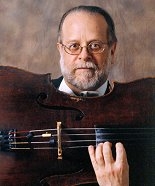Cellist Don Reinfeld '64 Retires from Rochester Philarmonic

Details
After 30 years with the Rochester Philharmonic Orchestra, cellist Don Reinfeld ‘64 is officially retiring. However, retirement does not promise mere relaxation for Reinfeld. Instead, he plans to devote himself to a different musical passion that has been quite literally instrumental throughout his career: the making of handmade bows for violins, violas, cellos, and basses.
Over the years, Reinfeld has performed in venues as legendary as Carnegie Hall and the Aspen Music Festival, but, despite enjoying an illustrious career in the orchestra, he felt that something crucial was missing.“Over time, I came to be bored by the dumbing down of much of the repertoire as a way of enticing larger popular audiences,” he says.“I felt that making bows was going to be more meaningful to me after 30 years of putting the orchestra first in my life.”
Reinfeld, who had played the cello since age eleven, decided on a musical career when he switched from graduate level classical studies to classical music at Indiana University. Immediately after finishing his master's degree, he began teaching cello, bass, and chamber music at the University of Arkansas in Fayetteville, where, he says, the school's bows were“in terrible condition.” He learned how to repair them.
Reinfeld decided to audition for the Buffalo Philharmonic Orchestra in 1973 and played there for five years before relocating to the Rochester Philharmonic Orchestra, which would become his mainstay. Having done repair work for his colleagues in Buffalo, he set up a studio in Rochester, NY, for bow repair, which evolved into bow making in 1985, when he began studying with renowned bow maker, William Salchow.
Planing the shaft of the bow from a stick of pernambuco, a resilient wood that grows only in the coastal rainforests of Brazil, Reinfeld strings it with fine horsehair attached to the head on one end and to the ebony ‘frog' on the other. The frog, along with the screw mechanism at the butt end of the stick, adjusts the tension of the hair. Other materials used in bow making include silver, gold, abalone shell, goat leather, and/or snake skin.
Reinfeld is currently undertaking a new project: crafting Mozart period transitional bows developed in the late 18th century.“I love working with my hands,” he says of his new occupation. As a bow maker, he ensures the high quality of other musicians' instruments and thus, he says,“helps the musical life of other players” in the same way that having well-crafted bows helped him throughout his career.
“And a fine bow is a thing of extraordinary beauty,” he adds.
You can visit his website at http://www.drbows.com.
—Nicole Gervasio



